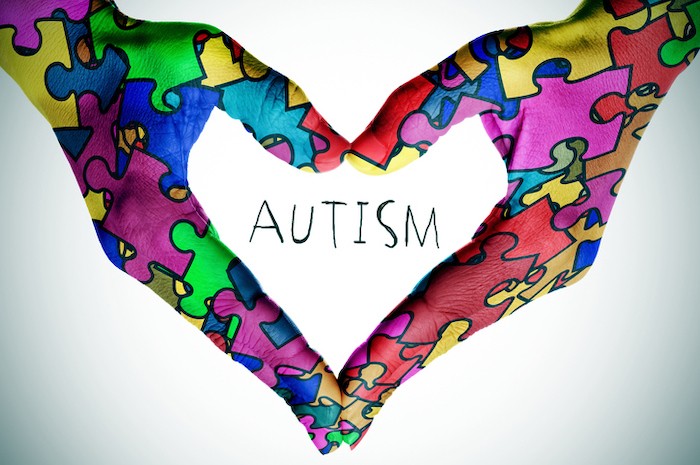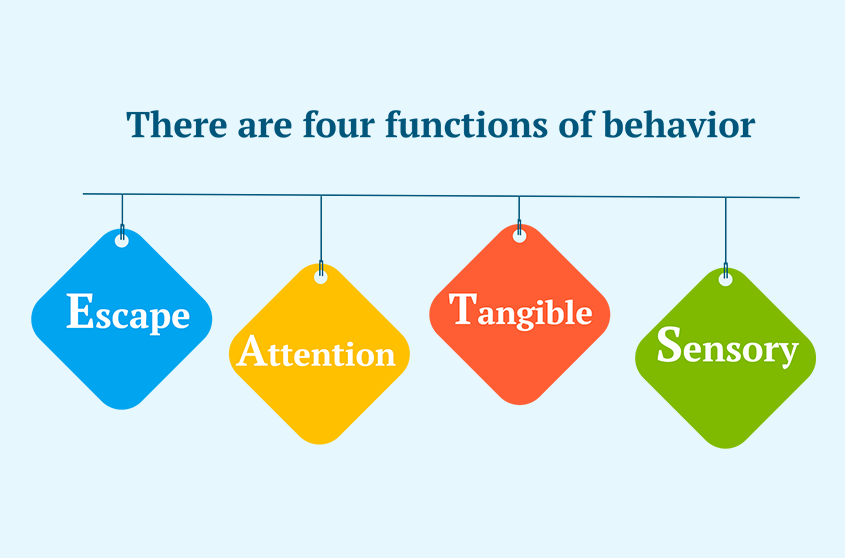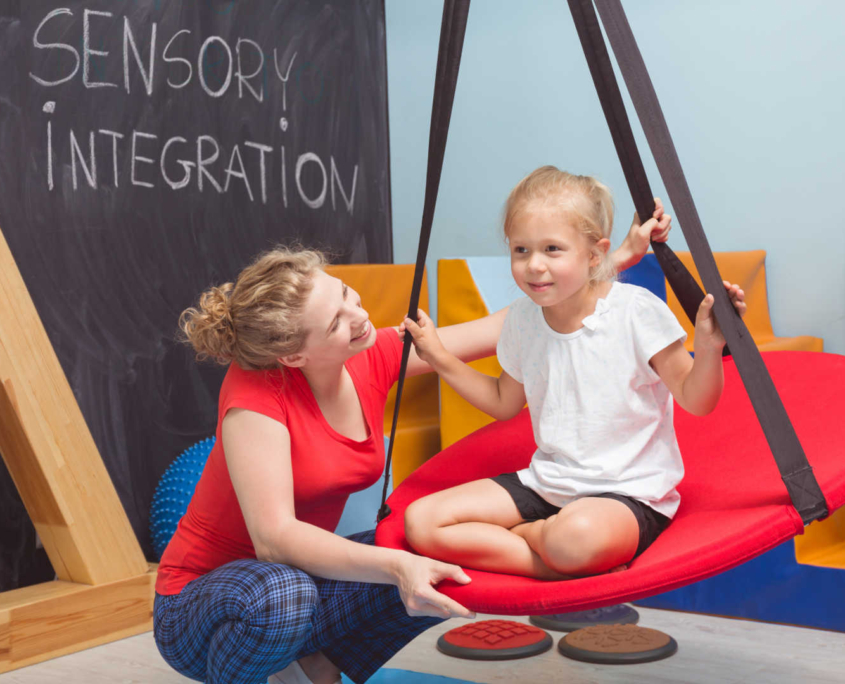When is a good time to start ABA therapy?
When a child is first diagnosed with autism, parents and caregivers can be overwhelmed by thoughts wondering “what now?” One thing experts agree on is that starting therapy as soon as possible is the best and most effective means to treat your child’s autism. The earlier the intervention the better, so beginning Applied Behavior Analysis (ABA) therapy immediately following autism diagnosis is critically important in getting the most out of your child’s treatment. There are various important reasons why an “early start” enhances the effectiveness of any ABA therapy program. The LeafWing Center’s experienced and professional team of ABA therapists will work with you to ensure a thoughtful and effective ABA therapy program is provided to your child upon their autism diagnosis.
This article will cover
- Reasons to start ABA therapy after your child’s autism diagnosis
- Benefits of Starting ABA therapy early
- Starting ABA therapy to prevent your child’s autism from getting worse
- Untreated autism spectrum disorder symptoms worsen over time
Reasons to start ABA therapy after your child’s autism diagnosis
Generally, “earlier is better” when it comes to starting ABA therapy. The best time to begin ABA therapy is typically immediately after a child’s autism diagnosis. At younger ages, children go through more frequent critical periods in their development. These critical periods are maturation stages in which the individual is particularly sensitive to stimuli in their environment. Teaching certain concepts in these formative years pays dividends in the long run.
Additionally, the earlier a child learns critical and age relevant behaviors and skills, the more productive and meaningful their time at school will be. The child will be able to access more of the curriculum if the necessary prerequisite skills are targeted early on. For example, a child who is taught to raise their hand to ask for help, initiate a social play interaction, and count from 1-10 during ABA therapy may gain the ability to absorb more from the academic and social environment at the school setting.
Research supports an early start for ABA therapy
Research shows that a child who starts ABA therapy in childhood has the potential to make significant improvements and emphasizes that ABA therapy is most effective the earlier it begins. Access to inclusive educational settings in a mainstream classroom is among the significant long term gains made by children who received early access to ABA therapy.

Benefits of Starting ABA therapy early
Research indicates that early intervention can improve challenging behaviors and children’s overall development. Another reason early intervention is important is to ensure that challenging behaviors are addressed early on so that they do not have the opportunity to become entrenched with age. Without an individualized, function-based intervention plan, challenging behaviors can become worse (e.g. increase in frequency, duration, and severity) over time. This is because reinforcement, over time, can strengthen behaviors. If a young child is constantly engaging in challenging behaviors, without a behavior plan in place, those challenging behaviors may be inadvertently reinforced, therefore contributing to the possibility that they may worsen over time.
Early intervention provides the skills necessary to set the child up for long term success. The more skills a child is equipped with early on, the more of their social and learning environments they will be able to access as they grow. In fact, teaching “pivotal behaviors” and “behavior cusps” are a crucial component of ABA programs, particularly during earlier stages of the ABA program. While these two terms are related, they refer to behaviors that, when learned, result in new and positive changes across many areas of a child’s life.
It’s never too late to start ABA therapy
While there are significant benefits to starting ABA therapy as early as possible, there is a point at which it is “too late” to start. ABA programs are highly individualized to the needs of the learner and Behavior Analysts take into consideration numerous factors when designing an ABA program. These will include the learner’s current behavioral, social, academic, communication, self-help, and other needs from different curricular areas. This is why many individuals benefit from ABA therapy even when starting a program later in their development.
Therefore, while “earlier is better” is the common recommendation by most clinicians, ABA therapy can benefit many learners at various stages in their development due to its emphasis on individualization.
Starting ABA therapy to prevent your child’s autism from getting worse
Can the symptoms that define an autism spectrum disorder (ASD) diagnosis get worse?” The answer is yes, but, with the right ABA therapy provider, the symptoms can get better.
For families that are just now starting their ABA-based therapy services at home and/or in a school setting, it is crucial to identify what these symptoms or difficulties are exactly. Upon identifying, assessing, planning and implementing proper treatment programs, these symptoms can be either directly or indirectly addressed by the ABA services. With proper guidance of a BCBA, a sound comprehensive treatment plan may facilitate gains over a targeted amount of time.
A child or adult with autism spectrum disorder may have limited, repetitive patterns of behavior, interests or activities, including any of these symptoms:
- Performs repetitive movements, such as rocking, spinning or hand flapping
- Performs activities that could cause self-harm, such as biting or head-banging
- Develops specific routines or rituals and becomes disturbed at the slightest change
- Has problems with coordination or has odd movement patterns, such as clumsiness or walking on toes, and has odd, stiff or exaggerated body language
- Is fascinated by details of an object, such as the spinning wheels of a toy car, but doesn’t understand the overall purpose or function of the object
- Is unusually sensitive to light, sound or touch, yet may be indifferent to pain or temperature
- Doesn’t engage in imitative or make-believe play
- Fixates on an object or activity with abnormal intensity or focus
- Has specific food preferences, such as eating only a few foods, or refusing foods with a certain texture

Untreated autism spectrum disorder symptoms worsen over time
There are some conflicting studies about autism and the prevalence of symptoms over time. That said, as with any symptom, untreated autism spectrum disorder symptoms will get worse over time. It is important then for families who have not yet received any prior ABA-based services to seek ABA therapy services in order to begin the process of managing the symptoms and reducing the learner’s undesirable behaviors. Early interventions have proven most effective in the treatment of autism. Those early interventions not only give children the best start possible, but also the best chance of developing to their full potential. The sooner a child gets help, the greater the chance for learning and progress. In fact, recent guidelines suggest starting an integrated developmental and behavioral intervention as soon as ASD is diagnosed or seriously suspected.
Families who previously received ABA therapy services may find themselves in a future position where they are having difficulty addressing the behaviors of their now older learner. Those families need to again seek out ABA therapy services to effectively address their child’s more current needs.
Related Glossary Terms
- ABC’s Of Behavior
- Acquisition Task
- Applied Behavior Analysis
- Behavior
- Behavior Chain
- Inclusive Classroom
Other Related Articles
- ABA Therapy For Autism
- ABA Therapy At Home
- How To Start ABA Therapy
- Some Components Of A Good ABA Program For Children With Autism
- What Are The 4 Behavior Functions Of ABA Therapy?
- What Is ABA Therapy?
Podcast
- Most Commonly-Searched ABA-Related Questions Answered
- Most Commonly-Searched ASD-Related Questions Answered
Frequently asked questions about ABA therapy
What is ABA Therapy used for?
ABA-based therapy can be used in a multitude of areas. Currently, these interventions are used primarily with individuals living with ASD; however, their applications can be used with individuals living with pervasive developmental disorders as well as other disorders. For ASD, it can be used in effectively teaching specific skills that may not be in a child’s repertoire of skills to help him/her function better in their environment whether that be at home, school, or out in the community. In conjunction with skill acquisition programs, ABA-based interventions can also be used in addressing behavioral excesses (e.g., tantrum behaviors, aggressive behaviors, self-injurious behaviors). Lastly, it can also be utilized in parent/caregiver training.
In skill acquisition programs, a child’s repertoire of skills is assessed in the beginning phase of the services in key adaptive areas such as communication/language, self-help, social skills, and motor skills as well. Once skills to be taught are identified, a goal for each skill is developed and then addressed/taught by using ABA-based techniques to teach those important skills. Ultimately, an ABA-based therapy will facilitate a degree of maintenance (i.e., the child can still perform the learned behaviors in the absence of training/intervention over time) and generalization (i.e., the learned behaviors are observed to occur in situations different from the instructional setting). These two concepts are very important in any ABA-based intervention.
In behavior management, the challenging behaviors are assessed for their function in the beginning phase of the services. In this phase, the “why does this behavior happen in the first place?” is determined. Once known, an ABA-based therapy will be developed to not just decrease the occurrence of the behavior being addressed, but also teach the child a functionally-equivalent behavior that is socially-appropriate. For example, if a child resorts to tantrum behaviors when she is told she cannot have a specific item, she may be taught to accept an alternative or find an alternative for herself. Of course, we can only do this up to a certain point—the offering of alternatives. There comes a point when a ‘no’ means ‘no’ so the tantrum behavior will be left to run its course (i.e., to continue until it ceases). This is never easy and will take some time for parents/caregivers to get used to, but research has shown that over time and consistent application of an ABA-based behavior management program, the challenging behavior will get better.
In parent training, individuals that provide care for a child may receive customized “curriculum” that best fit their situation. A typical area covered in parent training is teaching responsible adults pertinent ABA-based concepts to help adults understand the rationale behind interventions that are being used in their child’s ABA-based services. Another area covered in parent training is teaching adults specific skill acquisition programs and/or behavior management programs that they will implement during family time. Other areas covered in parent training may be data collection, how to facilitate maintenance, how to facilitate generalization of learned skills to name a few.
There is no “one format” that will fit all children and their families’ needs. The ABA professionals you’re currently working with, with your participation, will develop an ABA-based treatment package that will best fit your child’s and your family’s needs. For more information regarding this topic, we encourage you to speak with your BCBA or reach out to us at info@leafwingcenter.org.
Who Can Benefit From ABA Therapy?
There is a common misconception that the principles of ABA are specific to Autism. This is not the case. The principles and methods of ABA are scientifically backed and can be applied to any individual. With that said, the U.S. Surgeon General and the American Psychological Association consider ABA to be an evidence based practice. Forty years of extensive literature have documented ABA therapy as an effective and successful practice to reduce problem behavior and increase skills for individuals with intellectual disabilities and Autism Spectrum Disorders (ASD). Children, teenagers, and adults with ASD can benefit from ABA therapy. Especially when started early, ABA therapy can benefit individuals by targeting challenging behaviors, attention skills, play skills, communication, motor, social, and other skills. Individuals with other developmental challenges such as ADHD or intellectual disability can benefit from ABA therapy as well. While early intervention has been demonstrated to lead to more significant treatment outcomes, there is no specific age at which ABA therapy ceases to be helpful.
Additionally, parents and caregivers of individuals living with ASD can also benefit from the principles of ABA. Depending on the needs of your loved one, the use of specified ABA techniques in addition to 1:1 services, may help produce more desirable treatment outcomes. The term “caregiver training” is common in ABA services and refers to the individualized instruction that a BCBA or ABA Supervisor provides to parents and caregivers. This typically involves a combination of individualized ABA techniques and methods parents and caregivers can use outside of 1:1 sessions to facilitate ongoing progress in specified areas.
ABA therapy can help people living with ASD, intellectual disability, and other developmental challenges achieve their goals and live higher quality lives.
What does ABA Therapy look like?
Agencies that provide ABA-based services in the home-setting are more likely to implement ABA services similarly than doing the same exact protocols or procedures. Regardless, an ABA agency under the guidance of a Board-Certified Behavior Analyst follows the same research-based theories to guide treatment that all other acceptable ABA agencies use.
ABA-based services start with a functional behavior assessment (FBA). In a nutshell, a FBA assesses why the behaviors may be happening in the first place. From there, the FBA will also determine the best way to address the difficulties using tactics that have been proven effective over time with a focus on behavioral replacement versus simple elimination of a problem behavior. The FBA will also have recommendations for other relevant skills/behaviors to be taught and parent skills that can be taught in a parent training format to name a few. From there, the intensity of the ABA-based services is determined, again, based on the clinical needs of your child. The completed FBA is then submitted to the funding source for approval.
One-on-one sessions between a behavior technician and your child will start once services are approved. The duration per session and the frequency of these sessions per week/month will all depend on how many hours your child’s ABA services have been approved for—usually, this will be the number recommended in the FBA. The sessions are used to teach identified skills/behaviors via effective teaching procedures. Another aspect of ABA-based services in the home-setting is parent training. Parent training can take many forms depending on what goals have been established during the FBA process. The number of hours dedicated for parent training is also variable and solely depends on the clinical need for it. If a 1:1 session is between a behavior technician and your child, a parent training session or appointment is between you and the case supervisor and with and without your child present, depending on the parent goal(s) identified. Parent training service’s goal is for you to be able to have ample skills/knowledge in order for you to become more effective in addressing behavioral difficulties as they occur outside of scheduled ABA sessions. Depending on the goals established, you may be required to participate in your child’s 1:1 sessions. These participations are a good way for you to practice what you have learned from the case supervisor while at the same time, having the behavior technician available to you to give you feedback as you practice on those new skills.
As mentioned in the beginning, no two ABA agencies will do the same exact thing when it comes to providing ABA services; however, good agencies will always base their practice on the same empirically-proven procedures.
How do I start ABA Therapy?
In most cases, the first item required to start ABA therapy is the individual’s autism spectrum disorder (ASD) diagnosis report. This is typically conducted by a doctor such as a psychiatrist, psychologist, or a developmental pediatrician. Most ABA therapy agencies and insurance companies will ask for a copy of this diagnosis report during the intake process as it is required to request an ABA assessment authorization from the individual’s medical insurance provider.
The second item required to start ABA therapy is a funding source. In the United States, and in cases where Medi-Cal or Medicare insurances are involved, there is a legal requirement for ABA services to be covered when there is a medical necessity (ASD diagnosis). Medi-Cal and Medicare cover all medically necessary behavioral health treatment services for beneficiaries. This typically includes children diagnosed with ASD. Since Applied Behavior Analysis is an evidence based and effective treatment for individuals with ASD, it is considered a covered treatment when medically necessary. In many cases, private insurance will also cover ABA services when medically necessary, however in these cases, it is best to speak directly with your medical insurance provider to determine the specifics of the coverage and to ensure that ABA is in fact, a covered benefit. Additionally, some families opt to pay for ABA services out-of-pocket.
The next step to starting ABA therapy is to contact an ABA provider whom you are interested in working with. Depending on your geographic location, ABA agencies exist in many cities across the United States. Your insurance carrier, local support groups, and even a thorough online search can help you find reputable and properly credentialed ABA agencies near you. Our organization, LeafWing Center, is based in southern California and is recognized for aiding people with ASD achieve their goals with the research based on applied behavior analysis.
Once you have identified the ABA provider with whom you wish to work, they should help you facilitate the next steps. These will include facilitating paperwork and authorizations with your funding source. Once the assessment process begins, a BCBA (Board Certified Behavior Analyst) or qualified Program Supervisor should get in contact with you to arrange times in which interviews with parents/caregivers and observations of your loved one can be conducted. This will help in the process of gathering important clinical information so that with your collaboration, the most effective treatment plans and goals can be established for your loved one. This process is referred to as the Functional Behavior Assessment (FBA) and is elaborated on in different blog posts on our website. With regard as to what can be expected once ABA therapy begins, please read our blog post titled: When You Start an ABA program, What Should You Reasonably Expect from Your Service Provider?






















 The following are things that you should expect as a parent when you begin treatment for your child with Autism.
The following are things that you should expect as a parent when you begin treatment for your child with Autism.


